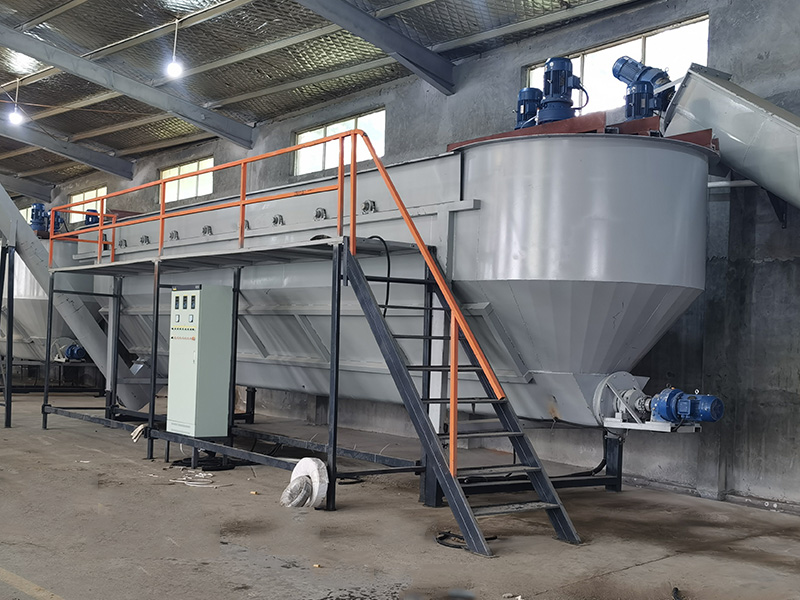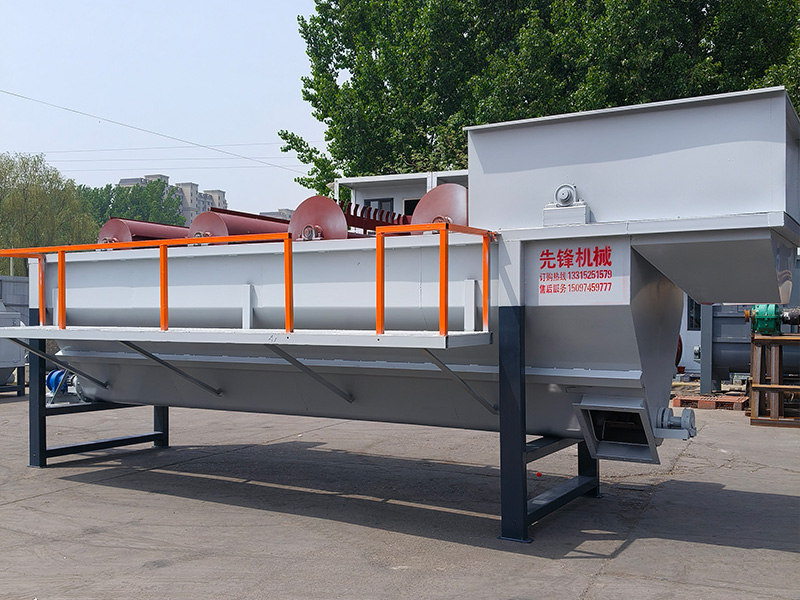The Essential Role of Rinsing Hot Washing Tanks in Enhancing Material Quality
The Essential Role of Rinsing Hot Washing Tanks in Enhancing Material Quality
Table of Contents
1. Introduction to Rinsing Hot Washing Tanks
2. The Importance of Rinsing in Material Processing
3. How Hot Washing Tanks Work
4. Advantages of Rinsing Hot Washing Tanks
5. Best Practices for Rinsing Hot Washing Tanks
6. Technology and Advancements in Rinsing Processes
7. En
Jul 26,2025

The Essential Role of Rinsing Hot Washing Tanks in Enhancing Material Quality
Table of Contents
- 1. Introduction to Rinsing Hot Washing Tanks
- 2. The Importance of Rinsing in Material Processing
- 3. How Hot Washing Tanks Work
- 4. Advantages of Rinsing Hot Washing Tanks
- 5. Best Practices for Rinsing Hot Washing Tanks
- 6. Technology and Advancements in Rinsing Processes
- 7. Environmental Considerations in Rinsing Operations
- 8. Frequently Asked Questions (FAQs)
- 9. Conclusion
1. Introduction to Rinsing Hot Washing Tanks
In the realm of material processing, **rinsing hot washing tanks** play a critical role in enhancing the overall quality of the materials being processed. These tanks are designed to remove contaminants and residues, significantly improving the purity and performance of end products. As industries strive for operational excellence, understanding the mechanisms and benefits of rinsing becomes paramount for manufacturers looking to optimize their production processes.
2. The Importance of Rinsing in Material Processing
Rinsing is an essential process in various manufacturing sectors, including **mining**, **metallurgy**, and **recycling**. The significance of rinsing hot washing tanks can be attributed to several factors:
The Elimination of Contaminants
Contaminants such as dirt, oils, and chemical residues can severely impact the quality of the materials being processed. Rinsing ensures that these impurities are effectively removed, leading to higher purity levels.
Enhancing Material Performance
The characteristics of materials, such as strength and durability, can be adversely affected by contaminants. Rinsing improves the integrity and performance of materials, ensuring they meet industry standards and specifications.
Cost Efficiency
By investing in effective rinsing processes, manufacturers can reduce waste and rework costs. Cleaner materials result in better quality products, minimizing the need for additional processing.
3. How Hot Washing Tanks Work
Hot washing tanks operate on the principle of using heated water or cleaning solutions to dissolve and remove contaminants. The process involves several steps:
Heating the Water
The water is heated to a specific temperature, which enhances the solubility of various contaminants. Higher temperatures facilitate the breakdown of oils and other residues, making them easier to remove.
Agitation Mechanism
Agitation is crucial in ensuring that the cleaning solution effectively interacts with the materials. This can be achieved through mechanical stirring or by creating turbulence within the tank.
Rinsing Cycle
After the washing phase, a rinsing cycle is initiated. Clean water is introduced to flush out any remaining contaminants and cleaning solutions, ensuring that the materials are left in a pristine state.
4. Advantages of Rinsing Hot Washing Tanks
Investing in rinsing hot washing tanks comes with a plethora of advantages:
Improved Material Quality
The primary advantage is the significant improvement in material quality. Rinsing hot washing tanks ensure that contaminants are thoroughly removed, leading to higher purity and better performance characteristics.
Increased Operational Efficiency
With cleaner materials, downstream processes such as **coating**, **molding**, and **fabrication** can occur more efficiently. This reduction in bottlenecks enhances overall productivity.
Regulatory Compliance
Many industries are subject to stringent regulations regarding material purity. Rinsing processes help manufacturers meet these compliance standards, avoiding potential fines and sanctions.
Enhanced Equipment Longevity
Contaminants can cause wear and tear on processing equipment. By ensuring that materials are clean, manufacturers can prolong the lifespan of their machinery, reducing maintenance costs.
5. Best Practices for Rinsing Hot Washing Tanks
To maximize the effectiveness of rinsing processes, manufacturers should adhere to several best practices:
Regular Maintenance
Routine maintenance of hot washing tanks is essential to ensure optimal performance. This includes checking heating elements, cleaning agitation mechanisms, and inspecting for leaks.
Utilizing Quality Cleaning Agents
Selecting the right cleaning agents is crucial. Chemical solutions should be compatible with the materials being processed and effective at removing specific contaminants.
Monitoring Water Quality
The quality of the rinse water plays a significant role in the rinsing process. Regular testing for contamination levels is vital to ensure that the rinse does not reintroduce impurities.
Training Personnel
Proper training for personnel operating rinsing hot washing tanks can enhance efficiency and safety. Workers should understand the importance of the rinsing process and adhere to established protocols.
6. Technology and Advancements in Rinsing Processes
The industry has seen significant advancements in rinsing technology, improving efficiency and effectiveness:
Automated Systems
The adoption of automated rinsing systems allows for precise control over temperature, agitation, and rinsing cycles. This leads to consistent results and minimizes human error.
Eco-Friendly Solutions
Recent developments have focused on eco-friendly cleaning agents and water recycling systems, minimizing environmental impact and reducing operational costs.
Real-Time Monitoring
Incorporating sensors and monitoring systems enables real-time tracking of rinse water quality and contamination levels, allowing for immediate adjustments to the rinsing process.
7. Environmental Considerations in Rinsing Operations
As industries become more conscious of their environmental footprint, the rinsing processes in hot washing tanks must also align with sustainable practices:
Water Usage Reduction
Implementing water-saving technologies such as closed-loop systems can significantly reduce water consumption during rinsing operations.
Effluent Treatment
Proper treatment of rinse water before discharge is essential to minimize pollution. Utilizing advanced filtration and treatment systems ensures compliance with environmental regulations.
Sustainable Cleaning Agents
Opting for biodegradable and non-toxic cleaning agents not only protects the environment but also promotes workplace safety.
8. Frequently Asked Questions (FAQs)
What materials benefit most from rinsing hot washing tanks?
Materials such as metals, plastics, and glass benefit significantly from rinsing processes as they are often contaminated with oils, dust, and other residues.
How often should hot washing tanks be rinsed?
The frequency of rinsing depends on the type of materials processed, but regular rinsing after each batch is recommended to maintain quality.
Can rinsing hot washing tanks improve production efficiency?
Yes, improved material quality from effective rinsing leads to fewer defects and rework, ultimately enhancing production efficiency.
What is the ideal temperature for rinsing?
The ideal rinsing temperature varies based on the cleaning agents used; however, temperatures between 60°C to 80°C are commonly effective.
Are there any safety concerns with hot washing tanks?
Yes, safety measures should be implemented, including protective gear for workers, proper ventilation, and monitoring of temperature to prevent burns.
9. Conclusion
Rinsing hot washing tanks play a crucial role in ensuring the quality and performance of materials within the manufacturing sector. By effectively removing contaminants, these systems not only enhance material integrity but also contribute to operational efficiency and regulatory compliance. As technology advances, incorporating best practices and environmentally sustainable solutions will further optimize rinsing processes, allowing manufacturers to meet the growing demands of quality and sustainability. Embracing the importance of rinsing hot washing tanks will undoubtedly lead to improved product quality and a competitive edge in the marketplace.
TAG:
Contact Us
E-mail :
Phone/WhatsApp:
Address:
Shunping, Baoding City, Hebei Province








